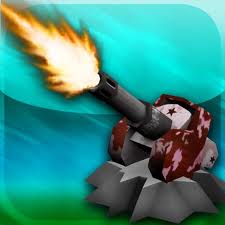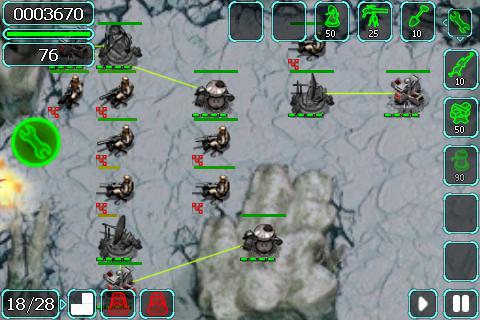The Crystal Touchscreen: What's next for tower defence?
Three things to expect from the next big title

Today's champion is tomorrow's has-been. Games - in particular iPhone and iPod touch games - evolve incredibly quickly, and what amazes today is only passable a year from now.
Tower defence games are most emblematic of this trend, having given iPhone and iPod touch much of its early identity.
Fieldrunners was one the first big hits, paving the way for countless other tower defence titles from the questionable Kill All Bugs! and Tweet Defense to the brilliant Star Defense and controversial geoDefense Swarm.
All of these games set the stage for what comes next: new tower defence experiences that push the genre further with new ideas and more features. While Star Defense still retains the top spot (despite PixelJunk Monsters Deluxe casting a dirty look from its roost on PSP), it's only a starting point for what could be the next big tower defence game.
Short, action-packed levels As with all games, the most fundamental element is level design. That means levels packed with action that don't drag on for an hour.
As with all games, the most fundamental element is level design. That means levels packed with action that don't drag on for an hour.
The most common mistake made by developers is to craft levels poorly suited to the portable nature of the device. Few games have successfully delivered short levels with lots of excitement.
In spite of their myriad flaws, both Crystal Defenders and Star Wars: Battle for Hoth have it right: short levels with no more than 30 waves. Fieldrunners and Vector TD both force you to play through too many waves, making the game into a chore.
Star Defense tests the upper limits of this with levels beginning at 40 and topping out at 60. Fortunately, the balancing is spot-on and you're given the option of choosing either long or short stages.
A well-balanced tower defence game doesn't require long levels. If enemies are challenging to defeat and in appropriate numbers, 30 waves of intense gameplay is preferable to 60 waves of mediocrity.
Challenge in a tower defence comes not from the number of waves in a level, but from the interplay of tactics and level design.
The difficulty question.jpg)
Due to the early visibility of a few poorly designed tower defence games, the false notion that good tower defence games are defined by their excessive level of difficulty has become common wisdom.
The simple reality is that any game with a level of difficulty pitched too high alienates a large number of gamers. The inference that hard tower defence games are good tower defence games is ridiculous.
Presenting challenging scenarios with enough tactical freedom to ensure they can be completed in a variety of different ways is what truly defines a great tower defence game.
geoDefense Swarm provides a key example of how tactical freedom alone isn't enough. Despite the liberty to place towers wherever you want and upgrade units several levels, the difficulty is pitched too high to be enjoyable.
Conversely, Crystal Defenders offers no tactical variety - stages must be completed in one particular way, or you fail.
It's worth noting that reducing the level of difficulty is as detrimental as ratcheting it up too high. Star Wars: Battle for Hoth was a breeze because the enemy units were too easily defeated and improper tactical balancing eliminated the need for varied defences.
New features frontier What most tower defence games get right is variety. Lots of levels, a nice range of units, and plenty of upgrades - these are all critical and the next big tower defence game must possess them all. It's going to take more, though, to push the genre forward.
What most tower defence games get right is variety. Lots of levels, a nice range of units, and plenty of upgrades - these are all critical and the next big tower defence game must possess them all. It's going to take more, though, to push the genre forward.
Integration with social gaming networks is expected for now-standard features: achievements/awards/trophies, leaderboards, challenges, and messaging.
Amazingly, many of the most popular tower defence games on iPhone and iPod touch lack one or more of these features. geoDefense Swarm has leaderboards, but not achievements. Star Defense has awards and leaderboards, but not messaging.
Support for these basic features is only the beginning. Advanced networking features such as multiplayer have the potential to open up a new frontier for the genre. While iPad port Tower Madness HD toyed with the idea, there's ample opportunity for multiplayer design in tower defence gaming.
Competitive play, in which one person controls enemies against an opponent constructing towers, deserves play-testing. Cooperative levels in which you're able to build defences with a partner either locally or via network is worth exploring, as are level editing and modding.
The take-away conceptThe tower defence games we currently have for iPhone and iPod touch are good fun, but it's abundantly clear that better can be done. Opportunities exist to fine tune the formula and introduce new gameplay mechanics, features, and other elements that we've not yet even considered.
It's now up to developers to seize this opportunity and create tower defence games that push the limits of the genre.
